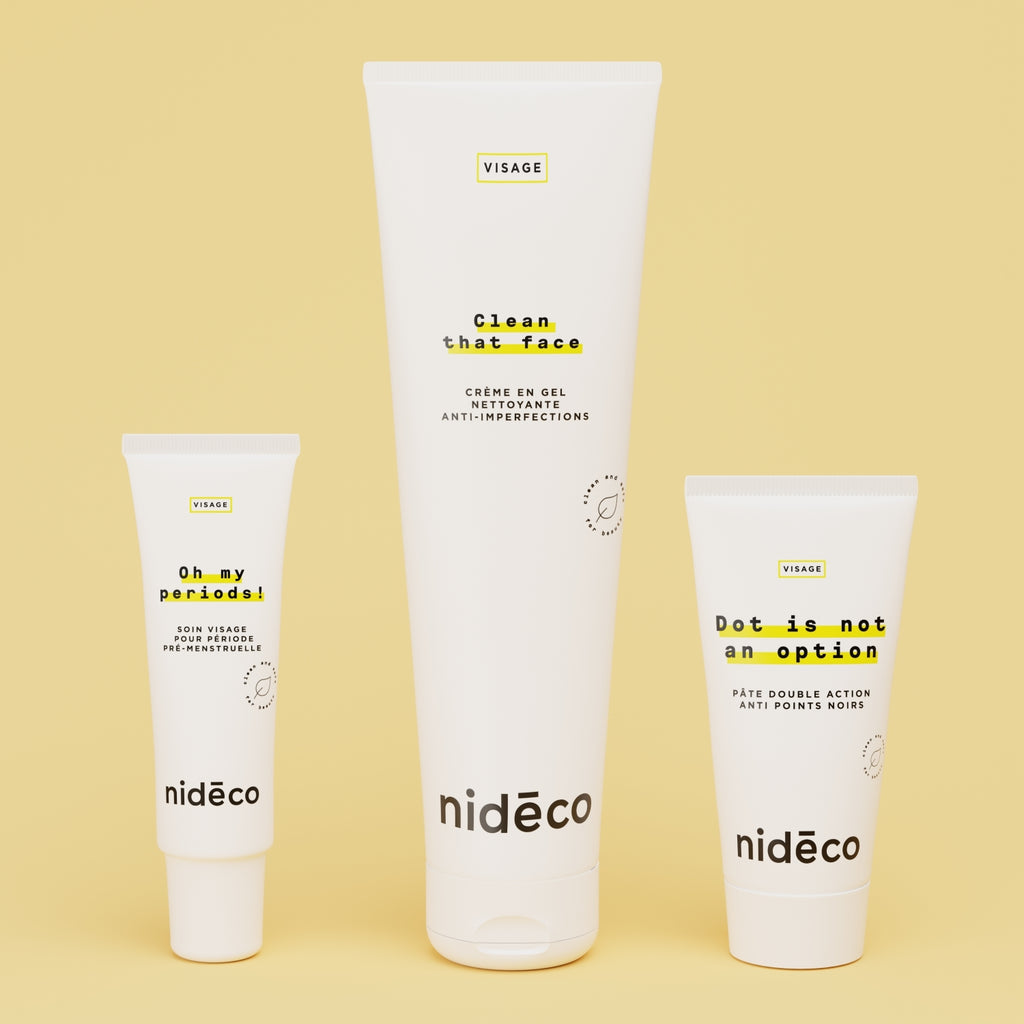How to decipher an INCI list

Very attached to the formulation of our products, we are convinced that a good product must above all answer with accuracy and effectiveness the need that you express.
Although we regularly highlight the active ingredients in our formulas, we understand that it isnot always easy to understand what makes up a cosmetic product.
And then the magic of the applications arrived, with the possibility of simply scanning its products to check the lists inci ("International Nomenclature of Cosmetic Ingredients").
But if you're looking for a way out, here are some tips to help you understand:
- An inci list is written in both Latin and English to make it easier to read for most people. Latin is used for natural ingredients from plants because it describes their botanical name.
- The ingredients are listed in a particular order, according to the quantity present in the product. The more concentrated the ingredient, the higher it is in the list. However, below 1% this rule is no longer required.
- The first 7 ingredients are generally a good indicator of the quality of the composition because they often represent the majority of the formula.
- There is an obligation to mention allergens, if :
- They are more than 0.001% for leave-on products (such as creams, oils or perfumes)
- They are more than 0.01% for rinse-off products (such as shampoos or shower gels)
- The main categories of ingredients:
The type of an ingredient can be identified by its reading in the inci list.
Here are the most common categories:
- "Aqua" or water for water (that one was easy ;))
- Oils: when they are of vegetable origin and not transformed (esterified in expert language), they appear with the name "oil". example: Corylus avellana seed oil for hazelnut oil.
- Plant extracts: used as active ingredients, they are identified by the name "extract". Example: Paeonia albiflora flower extract for peony extract.
- Alcohols: Noted "alcohol", they can be either alcohols used for perfume, for preservation or for a fresh effect when applied. But they can also be fatty alcohols which are used as emulsifiers, or as emollients for the skin for example. One recognizes these last ones by the ending " -yl ". Example: Cetyl alcohol which is a fatty alcohol coming in particular from the coconut and which softens the skin and facilitates the disentangling of the hair.
- The dyes: they begin with CI, followed by numbers. If the first one is a 7, it is a natural dye.
- Preservatives: protecting the formula from aging and possible microbiological contamination, they can be natural or synthetic. Here is a non-exhaustive list to help you identify them:
Authorized in organic :
- Benzoic acid and its salts,
- Benzyl alcohol,
- Salicylic acid and its salts,
- Sorbic acid and its salts,
- Dehydroacetic acid and its salts.
To avoid:
- Parabens ("parabens") because they are occlusive
- MIT for methylisothiazolinone because it irritates
- Phenoxyethanol as an allergen and potential hormone disruptor
- Triclosan as endocrine disruptor
- Cetrimonium bromide as allergen
- BHA and BHT because one is a potential hormone disruptor and allergen, the other is a potential carcinogen.
And more broadly, here are the other ingredients that we do not recommend (and that we exclude from our formulas):
- Silicones, which are identified by the -cone or -ane or -conol endings. They are occlusive for the skin and not ecological.
- "PEG" or "PPG" for polyethylene glycol and polypropylene glycol because they are polluting, irritating and potentially carcinogenic.
- The mineral oils named "mineral oil" or "paraffinum", derived from petrochemistry / from oil refining, they have nothing beneficial for the skin.
- SLS stands for Sodium Laureth Sulfate or Sodium Lauryl Sulfate because they are irritants.
It is important to note that all products on the market are subject to European regulations. This strict regulation evolves over the years and according to the different studies that can be conducted.
So don't rush to throw away all your cosmetics containing decried ingredients. Wasting is not good either. On the other hand, we advise you to turn to natural alternatives for your next purchases ;)
At nidé.co, we remain particularly vigilant on all these topics and try to make the difference every day. And of course we are always listening to you! If you have any suggestions or comments on the wording: we are here to talk about it!
Finally, to go deeper into the subject and sort out the ingredients, we recommend the following sites which list a very large number of ingredients: the truth about cosmetics and cosmetic obs.


























